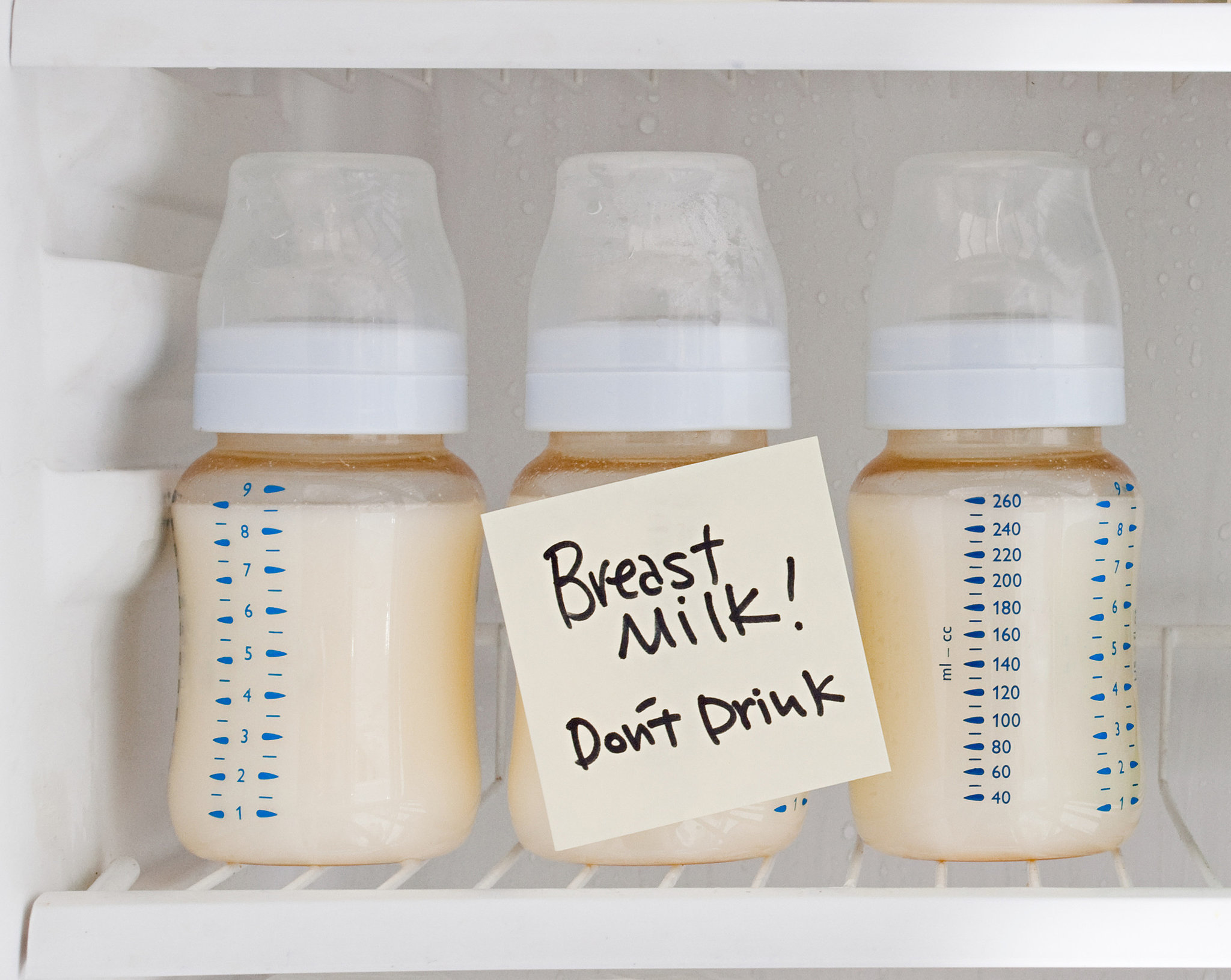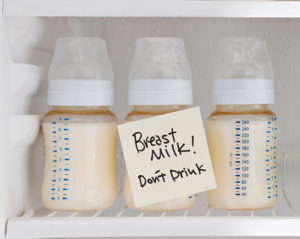SHOVUIS- BAMIDBAR COMBO
A number of very exciting Mazel-Tov shout-outs by close friend, here we go. We begin with two mamish hot off the presses engagements, both families very dear friends of the Oisvorfer and eishes chayil.
A very big Mazel Tov to to our very near and dear friends, Carol and Shlomie Blisko of Woodmere, NY upon the engagement of their son Zach to Jordanna Abikzer, beautiful daughter of Susan and Avi Abikzer. Carol wants everyone to know that she plans to stay for the entire wedding. Mazel Tov to both extended families. May Jordanna and Zach be blessed to enjoy many years of blissful marriage.
As well, a very big and heartfelt Mazel Tov to our dear friends Jenny and Joey Felder upon the engagement earlier this week of their beautiful daughter Nina to Mickey Levinson, he the son of Esti and Robert Levinson of Cedarhurst N.Y. A very hearty mazel tov to the Honorable Shimon Felder and his eishes chayil, Nina’s grandparents, to Oisvorfer chosid and funny man Aharoin Felder, and to the entire extended Felder and Levinson families. Mazel Tov as well to Jenny’s siblings and extended mishpocho. If only your parents could partake….
Mazel Tov to our friends Mindy and Gerald Gartner upon the arrival of a new grandson -with many more to come- born to their children Sari and Benji Bedziner. Mazel Tov as well to Benji’s parents, Leah and Hal Bedziner. The bris will take place on the heylige Shabbis at the YILC; all are invited.
Mazel Tov to our friends Chani and Jay Kestenbaum upon the arrival of yet another grandson (keyn yirbu) born to their children Ati and Benji Kestenbaum. If you weren’t invited to the bris, thank Jay personally when you next see him; the davening over at the yeshiva took one full hour.
Raboyseyee and Ladies
Suckling:
As we prepare to complete the counting of the sefiras ho’oimer tomorrow evening as mandated by the RBSO Himself a few weeks back (parshas Emor), and as we get ready to usher in the Yom Tov of Shovuis (Weeks), in this week’s parsha of Bamidbar, the RBSO will order another count, this one a census. He wants to know how many Yiddin -males only- above the age of 20 there are. So happens that there were 603,500 men available for military service. He will order a separate count of the livi’im (Levites) who did not serve; more on them later. Grada, He had previously ordered a count just after the eygel caper (golden calf) but that was 7 months ago. Rashi will tell us He counts us often because He loves us. Shoin, seemingly He did not love everyone because as we make our way through sefer Bamidbar, more than a few (thousand) will incur his wrath and pay with their lives. Grada, He eliminated many thousands, especially those that had the temerity to combine illicit sexual activities with avoido zoro (idol worship), a deadly combination, always. He seems to forgive sexual indiscretions (not always) but never so to idol worshippers.
 Valiantly as the Oisvorfer tried to complete the entire sefira count this year (with a brocho), counting mamish all 49 days as mandated by the heylige Toirah (with many specific nuances added by our rabbis), sadly, he fell short. After going all the way to 40 (mistama also a new record), the Oisvorfer is once again admitting defeat. Getting to 40 was no small feat and the number 40 itself has some relevance to Shovuis as will be discussed below. Shoin, now you chap why the Oisvorfer is appropriately named. He will try again next year. The good news: following the coming Yom Tov of Shovuis this coming Sunday and Monday, Yom Kippur is only a few months away. The RBSO will, after a few hundred beatings of our chests, and maybe a dip in the mikveh (ritual bath), surely forgive us for all, or, most of the sins we committed this past year and our guilt will be assuaged. It’s the Jewish way.
Valiantly as the Oisvorfer tried to complete the entire sefira count this year (with a brocho), counting mamish all 49 days as mandated by the heylige Toirah (with many specific nuances added by our rabbis), sadly, he fell short. After going all the way to 40 (mistama also a new record), the Oisvorfer is once again admitting defeat. Getting to 40 was no small feat and the number 40 itself has some relevance to Shovuis as will be discussed below. Shoin, now you chap why the Oisvorfer is appropriately named. He will try again next year. The good news: following the coming Yom Tov of Shovuis this coming Sunday and Monday, Yom Kippur is only a few months away. The RBSO will, after a few hundred beatings of our chests, and maybe a dip in the mikveh (ritual bath), surely forgive us for all, or, most of the sins we committed this past year and our guilt will be assuaged. It’s the Jewish way.
Speaking of Shovuis, the joyous Yom Tov when we celebrate Matan Toirah, the day the RBSO Himself came down in a pillar of smoke amidst a thunder and light show and gave us the Ten Commandments, the Oisvorfer was klerring (thinking) azoy: why do we taka celebrate this day? Let’s review what took place to those Commandments. Isn’t it emes that upon Moishe’s descent from Har Sinai, the first action he took upon hearing the reveling around the eygel, was to throw the Luchis to the ground and watch as they shattered into tiny pieces while the letters that formed the words flew (according to the medrish) all the way back to shomayiim (heaven)? It is! Isn’t Shovuis then directly related to the broken Luchis? And this we celebrate? Efsher we should instead be celebrating on Yom Kippur, the day Moishe returned with a second set of brand new Ten Commandments? A set he did not break. Taka not a stupid thought. Efsher we should be fasting on Shovuis instead of stuffing our faces with all sorts of milichig macholim (dairy products) that greatly exacerbate the symptoms of those already prone to suffering from IBS (irritable bowel syndrome). Why taka do we buy and consume cheesecake and other dairy dishes on this Yom Tov? Did the RBSO descend onto Har Sinai with cheese danish for all?
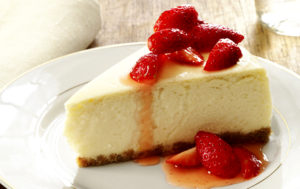 Taka an excellent kasha (question), ober, as with most other minhogim (customs) that few chap who started, or why, there are of course several medroshim that proffer explanations. Feel free to run with the one that strikes your fancy. Says the medrish azoy: the heylige Toirah itself hints to the minhag of eating milky dishes (not cheesecake specifically) on Shovuis. It does? And where might you find such a hint? Shoin, in another 7 weeks when we read parshas Pinchas, he the hero vigilante who committed a double murder that met with the approval of the RBSO, we will come across these words which discuss Shovuis: “Bi’hikravchem Mincha Chadosho LaHashem B’ishvuoisaychem” (Bamidbar 28:26/27). Of course you can also find these words in the single paragraph we recite for Shouvis during the musif prayer. Now if you look closely at the first letter of these Hebrew words (last four words only, or, first four, your choice), they could form the word ‘mi’cholov (from milk). Shoin, there you have it. Some very clever Toirah inspired Jew, decided that these very words represent milk and therefore we are obligated to consume products that are made ‘mi’cholov’, from milk, on Shovuis. And what was the most expensive product he could manufacture ‘from milk’ and sell at a premium? Cheesecake! Shoin, the minhag was born! Gishmak. As an aside, generations later, when, as a result of slumping sales associated with more than generous amounts of gas, flatulence and bloating caused by digestive issues, specifically to those also suffering from lactose intolerance, his eyr-eyniklich (great great grandchildren) also invented Lactaid. Shoin.
Taka an excellent kasha (question), ober, as with most other minhogim (customs) that few chap who started, or why, there are of course several medroshim that proffer explanations. Feel free to run with the one that strikes your fancy. Says the medrish azoy: the heylige Toirah itself hints to the minhag of eating milky dishes (not cheesecake specifically) on Shovuis. It does? And where might you find such a hint? Shoin, in another 7 weeks when we read parshas Pinchas, he the hero vigilante who committed a double murder that met with the approval of the RBSO, we will come across these words which discuss Shovuis: “Bi’hikravchem Mincha Chadosho LaHashem B’ishvuoisaychem” (Bamidbar 28:26/27). Of course you can also find these words in the single paragraph we recite for Shouvis during the musif prayer. Now if you look closely at the first letter of these Hebrew words (last four words only, or, first four, your choice), they could form the word ‘mi’cholov (from milk). Shoin, there you have it. Some very clever Toirah inspired Jew, decided that these very words represent milk and therefore we are obligated to consume products that are made ‘mi’cholov’, from milk, on Shovuis. And what was the most expensive product he could manufacture ‘from milk’ and sell at a premium? Cheesecake! Shoin, the minhag was born! Gishmak. As an aside, generations later, when, as a result of slumping sales associated with more than generous amounts of gas, flatulence and bloating caused by digestive issues, specifically to those also suffering from lactose intolerance, his eyr-eyniklich (great great grandchildren) also invented Lactaid. Shoin.
Another reason given for eating dairy products is because the word cholov (milk) spelled using the Hebrew letters of chet-lamid-beis, has the gematria (numerical value) of 40. Ober, what has 40 to do with Shovuis? Weren’t we told to count to 49? Ver veyst, ober 40 represents, as the heylige Gemora (Soitah) tells us, the time it takes for a baby to form in its mother’s uterus. And what has baby formation to do with Shovuis and eating dairy? Ver veyst; ober, a very interesting Rashi we will soon look into will taka discuss milk. And since this Rashi appears in this week’s parsha and since this Rashi and parsha are always read mamish just before Shovuis as enacted by Ezra HaSoifer (the scribe), maybe that’s why and how the custom of eating milky and dairy products began. Ober vus zugt Rashi (what sayeth Rashi)? We will get to it soon.
 Or, efsher the #40 represented by the word ‘cholov’ is somehow related to the 40 days Moishe spent up on Har Sinai preparing to receive the heylige Toirah. Grada, he spent 40 days up there on three different occasions. That would represent quite a bit of milk and cheesecake. Or, the #40 might represent the number of years the Yiddin sojourned in the midbar. Or, efsher the 40 is related to the 40 years the RBSO delivered daily portions of Mun, ver veyst. Seemingly the #40 is prominent and since it’s related to milk, dairy dishes we must eat.
Or, efsher the #40 represented by the word ‘cholov’ is somehow related to the 40 days Moishe spent up on Har Sinai preparing to receive the heylige Toirah. Grada, he spent 40 days up there on three different occasions. That would represent quite a bit of milk and cheesecake. Or, the #40 might represent the number of years the Yiddin sojourned in the midbar. Or, efsher the 40 is related to the 40 years the RBSO delivered daily portions of Mun, ver veyst. Seemingly the #40 is prominent and since it’s related to milk, dairy dishes we must eat.
Ober says the Mishne Birurah (494:3) azoy: when the Yiddin left Har Sinai following receipt of the heylige Toirah, they were instantly commanded to keep kosher. Having become aware that their slaughtering practices weren’t up to snuff, their knives weren’t kosher, and that their coking vessels as a result, were no longer kosher (they could no longer combine meat and dairy), they could no longer use them to cook their meat. Their vessels were what we call ‘treif’ mamish. What to do? Shoin, they were forced to eat only milichigs (dairy). Where they procured dairy dishes and ingredients, ver veyst, but the story reads nicely. And to recall this historical occurrence, on Shovuis, we eat dairy products. Case closed!? Ober let’s get real: could this possibly be the reason? Does this entire myseh (storyline) make sense? Didn’t we learn and don’t we believe what the heylige Toirah tells us about the midbar menu? Did we not learn that for 40 years the RBSO provided the Yiddin with daily portions of Munn? And didn’t we also learn that all the Yiddin ate in the midbar was Munn? We did. What’s pshat then that their vessels were no longer kosher? Who needed vessels? Why and how were they eating meat? Who needed meat (or dairy) when the magic Munn took on the taste of any food their minds could conjure up? Isn’t that what we were taught in yeshiva? It is! Moreover, though we have a minhag to eat dairy on the Yom Tov, it is zicher not to the exclusion of having meat and other meat dishes. Grada, the Oisvorfer’s father, OBM, ate some dairy and then had his meat meal. Many do the same. And bazman hazeh (in our times), many will either alternate meat and dairy meals or taka have some dairy and then have a full meat meal. What’s taka pshat? And noch a kasha (one more question): assuming that taka they could no longer use their vessels to cook meat, who said they couldn’t enjoy a nice parve (neutral) meal? Vus epes milichigs?
Taka givaldige kashas on the Mishneh Birura ober guess what? Says the Moiadim Vizmanim authored by Rev Moshe Shternbuch citing the heylige Gemora (Brochis 6b) mamish a gishmake chiddish (breakthrough thought) azoy: up until Har Sinai, it was davka the eating of dairy products was strictly verboten. OMG! Why? Because up until then, milk was considered to be ‘eyver-min-ha’chai (eating a part from a live animal) and avada we know that eating eyver-min-hachai was long prohibited going back to the times of Noaich and the mitzvis given to him and his goyishe offspring. And back then, according to this thinking, the only kosher milk came from the breasts of a nursing mother which only suckling infants, or others, if you chap, could enjoy. Grada the Rashi we referenced above but which we will explore below, discusses infant suckling and the role it played in the Levite census. We will get to that soon.
In any event, according to him, the reason the minhag of eating dairy products on Shovuis began is davka because it was on that day that the RBSO allowed His Chosen People to enjoy dairy products. Accordingly, we celebrate this day yearly by eating dairy. Gishmak. Of course we could ask yet more questions on this ober let’s move on.
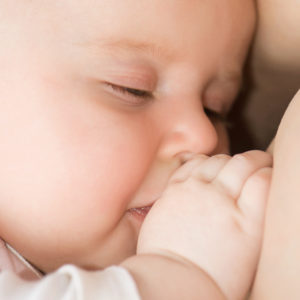
Speaking of breasts and suckling, listen to this pshat as to why we eat dairy on Shovuis. Says the medrish azoy: avada we all know that Moishe was rescued from his solo river cruise on the 6th day of Sivan and guess what? It so happens that Shovuis is also on the 6th day of Sivan. Does everyone agree? Not! Some say that the RBSO appeared on the 7th of Sivan. The good news: both views agree that He came on the heylige shabbis. In any event, the heylige Gemora (Soitah 12b) recounts how baby Moishe refused to suckle from the breasts of the Egyptian wet nurses. Why not? The RBSO did not want the mouth that would one day communicate directly with Him (Moishe and the RBSO spoke ‘peh-el-peh’ -mouth to mouth) to nurse from a shiksa. Thankfully, only Moishe had this restriction, if you chap. Baby Moishe was miraculously brought over to Yoicheved (his natural mother) for nursing, and the reason we eat dairy is to commemorate the miracle which caused Bisya (Paroy’s daughter) to deliver baby Moishe for kosher breast suckling. Mamish Gishmak. Got milk?
The bottom line: the minhag (custom) of eating dairy was started, and avada we all know that a minhag is stronger than a din (law) as a great rabbi once told the Oisvorfer. And his proof? Said the rabbi who was very recently feted at the YU graduation festivities, azoy: We know with certainty that a minhag is stronger than a din because if someone borrows money from his friend, he is certainly obligated to repay the loan. That’s the din (law). Ober, the minhag is not to! Shoin: there you have absolute proof. Accordingly, now that some Toirah inspired entrepreneur started the minhag of eating milichigs and specifically cheesecake, and then began weaving various letters and words to connect his minhag to Shovuis, we must of course follow the minhag. Who are you to argue? Veyter!
Welcome to sefer and parshas Bamidbar. Chazal, our wise sages, seemingly weren’t happy with the name of Bamidbar and named this book, Sefer Hapikudim (the book of counts). And as you all know from previous postings on this parsha dating back to 2010 -see the archives of previous gems over at www.oisvorfer.com, – this great book which follows the Yiddin during their 40 year midbar stint, contains two different census counts the RBSO ordered Moishe to undertake. Grada this will be the third time the RBSO ordered a count or counted us Himself. The first took place as the Yiddin left Mitzrayim following 210 years of slavery, the second, following the eygel massacre, and in this week’s parsha, the third. Other counts will follow and according to kabolo (mysticism), one final count will take place just before, or in connection with, the arrival of the Moshiach. The next count will take place over in parshas Pinchas. Lest you think that a parsha dedicated to counting each sheyvet (tribe) according to their fathers’ household is boring, and efsher it is, as even Rashi the foremost of all commentators had little to say about most of the parsha, leave it up to the Oisvorfer to mine a few gishmake pearls, one or more of which will be shared below. Parshas Bamidbar contains not one of the 613 mitzvis contained in the entire heylige Toirah, ober, the medrish and others had plenty to say. Let’s talk numbers.
Nu, when the census was complete, the total number of Yiddin, males only, available to serve in the RBSO’s army, came to 603,500. As an aside, the sheyvet (tribe) of Yehuda had 74,600 eligible men. Yehuda’s was the largest of the tribes. By contrast, the sheyvet of Menashe had but 32,300. All others (excepting Levi) had numbers that fell in the middle. The heylige Toirah will also teach us that there were 22,273 bichoirim (first born males). How many first born females were there? How many women in total? And how many Yiddin in total? We don’t know! Why not? Because the heylige Toirah does not tell us.
Ober, says the Oznayim LaToirah (Shemois 1:7) somewhat perplexingly azoy: there was a population explosion of Yiddin while they were enslaved over in Mitzrayim (Egypt), and an even bigger one, while they valgered (sojourned) in the midbar. How big? Very! Based on the 603,500 army-ready men, plus other males under 20 and above 60 years of age, in addition to girls and mothers of all ages, there were millions of Yiddin. He assumes (and so states empathically) that the typical mother gave birth to an average of 55 children. Yes, you read that correctly. And his basis for this at first blush difficult to accept and rationalize number of children per family? Nu, above we read the there were 22,273 bichorim (first born males). They were mistama born to 22,273 mothers. Given the totals of known men and extrapolating other figures, when all the numbers are added up, it seems epes possible that taka the RBSO performed a great ness (miracle) and that many babies were born with each pregnancy. Ober how could a limited number of women have so many children? Let’s recall that this census took place in year two of the midbar journey. How were all these pregnancies and deliveries possible?
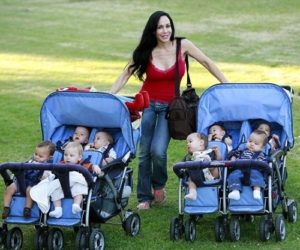 Ober, let’s recall what the heylige Toirah (Shmois 1) told us: “Vi’Ka’asher yi’anu oi’soi, keyn yirbeh, v’cheyn yifrotz” (as the Mitzrim pained and afflicted the Yiddin, so did they increase and multiply). In other words: efsher to alleviate the stress of slavery and continued suffering, they kept having more and more sex, and as a result, more and more children. Back in Shmois, we quoted several medrashic opinions as to how many children were conceived and born from each pregnancy. Since you long forgot, let the Oisvorfer remind you that the numbers ranged from 6-60 per pregnancy. Why not? Is that so hard to believe and get into your farshtuppta keplech (stuffed heads)? Let’s recall that these were times of open nisim (miracles). There was midbar magic all around. Did the RBSO not deliver Munn daily? Did He not intervene and ensure that the clothing the Yiddin wore never tore, and that their shoes, though used often to traverse the midbar and move to different encampments, never wore out? And the list goes on. Was the RBSO not then capable of having them produce supernaturally by the liter? Avada! All you need to do is believe. Shoin, you’re still having difficulty chapping how one woman could conceive that many times and deliver over 50 children? Not to worry: another more conservative medrish will tell us that the average family consisted of but 27 or 28 children. Whatever the number, it was quite staggering and zicher miraculous. Never doubt the RBSO!
Ober, let’s recall what the heylige Toirah (Shmois 1) told us: “Vi’Ka’asher yi’anu oi’soi, keyn yirbeh, v’cheyn yifrotz” (as the Mitzrim pained and afflicted the Yiddin, so did they increase and multiply). In other words: efsher to alleviate the stress of slavery and continued suffering, they kept having more and more sex, and as a result, more and more children. Back in Shmois, we quoted several medrashic opinions as to how many children were conceived and born from each pregnancy. Since you long forgot, let the Oisvorfer remind you that the numbers ranged from 6-60 per pregnancy. Why not? Is that so hard to believe and get into your farshtuppta keplech (stuffed heads)? Let’s recall that these were times of open nisim (miracles). There was midbar magic all around. Did the RBSO not deliver Munn daily? Did He not intervene and ensure that the clothing the Yiddin wore never tore, and that their shoes, though used often to traverse the midbar and move to different encampments, never wore out? And the list goes on. Was the RBSO not then capable of having them produce supernaturally by the liter? Avada! All you need to do is believe. Shoin, you’re still having difficulty chapping how one woman could conceive that many times and deliver over 50 children? Not to worry: another more conservative medrish will tell us that the average family consisted of but 27 or 28 children. Whatever the number, it was quite staggering and zicher miraculous. Never doubt the RBSO!
Ober, why are we delving into these numbers? Davka because we want to contrast the spectacular growth and census of the other shivotim (tribes) to those of the Livi’im (Levites), they the tribe for whom the RBSO ordered a separate count. Ober, why were they singled out for a special count? Nu, given that the heylige Oisvorfer is himself a Levi, let’s discuss this topic a bit more bi’arichus (at length). As it turns out, and as you will read below, Moishe was told to count the Livi’im from the age of but one month (other tribes were counted from the age of 20). One would therefore assume that the count might be quite high. Ober, you all avada know what happens when one assumes and avada you would be wrong. When all counted, the total of the Livi’im, came to but 22,000. Shtelt zich di shalylo (the question arises) azoy: What happened to the Livi’im? Were they poor lovers? Were they having performance issues, if you chap? Were their wives unattractive, efsher ugly? Could they not conceive as did the other women? How was it that the Livi’im, the very special sheyvet that did not participate in the eygel fiasco, were so few in number? Did the RBSO not love the Livi’im? Grada He did, very much.
Nu, as expected, at least one of these questions also bothered others. Mistama they all did, ober, only the Oisvorfer is prepared to ask them all. Let’s begin by taking a closer look at the instructions given by the RBSO to Moishe regarding the count. Said the RBSO (Bamidbar 3: 15/16)azoy: “Take a count of the Livi’im, every male, from one month of age and up shall you count them. Moishe counted them, ‘Al Pi Hashem’, according to the word of Hashem, Ka’asher Tzivoh, as he was commanded.” And what’s’ wrong with that sentence? What bothered Rashi and others were the seemingly extra words contained in the instructions? Why taka repeat that Moishe counted them Al Pi Hashem? Of course he did. Ober says Rashi so gishmak, azoy: When Moishe heard the RBSO’s instructions to count the Livi’im from the tender age of one month, he chapped that these infants were still suckling from their mothers’ breasts. Said Moishe to the RBSO: how am I supposed to count these kids? Am I to enter the tents of these kids as they are being breastfed? Moishe chapped that he should not be chapped inside a tent with bare breasted women (neither should you)! Said the RBSO mamish so gishmak azoy: Moishe, you do your job and let Me do mine. You stand outside the tent of each suckling infant. Avada you should not see the bare breasts of nursing mothers. Moishe did just that. Ober, how did he know how many infants were in each tent? Shoin: the RBSO performed some more midbar magic: a ‘bas koil’ (heavenly voice) rang out and announced to Moishe just how many young infants were enjoying milk from their mothers’ bosoms. The bottom line: The count was taka complete Al Pi Hashem, through the mouth, of the RBSO who taka seemingly somehow mouthed the count to Moishe. Gishmak mamish and worthy of Shabbis and Yom Tov tish discussion instead of, or efsher in addition to, the latest headlines, if you chap.
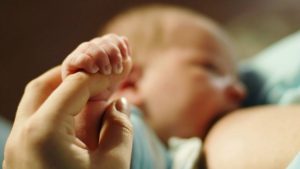 Nu, Raboyseyee, now you know and can chap how and why milk is connected to the parsha which is always read just before the great Yom Tov of Shovuis. One more point: were you to spend your time learning the heylige Toirah and all the accompanying Rashis, instead of gossiping and reveling at the downfall of other tyerer Yiddin, if you chap, you too might be inspired to find some new business opportunity.
Nu, Raboyseyee, now you know and can chap how and why milk is connected to the parsha which is always read just before the great Yom Tov of Shovuis. One more point: were you to spend your time learning the heylige Toirah and all the accompanying Rashis, instead of gossiping and reveling at the downfall of other tyerer Yiddin, if you chap, you too might be inspired to find some new business opportunity.
Earlier we asked azoy: why was it taka the case that sheyvet Levi was so tiny when compared to other shevotim? Guess what? At least ten different answers are proffered by ten different medroshim; let’s see what a few had to say.
Says the RambaN azoy: the reason the other tribes were so large was because as we stated above, their pregnancies were tied to their suffering while enslaved. Those who suffered were able to chap more. Ober, the Livi’im were never enslaved; they were free to move about Goishen and other cities all over Mitzrayim. Accordingly, they did not multiply in the miraculous manner described above. The RBSO had their backs; mistama He has yours too when you suffer greatly. Instead, they had to rely on more natural pregnancies and child birthing.
Ober listen to this pshat found in the Tzror Hamor: the Livi’im, he tells us, were the spiritual leaders of the Yiddin. Let’s recall that Moishe and Ahroin were both from sheyvet Levi. And? Given their heightened spirituality, they were mistama immersed in learning the heylige Toirah and mistama other holy books (though they didn’t yet exist, but so what). And? Says the heylige Gemora (Sanhedrin 26B) azoy: “Toirah mateshes koichoy shel odom.” And what does that mean? Study of the heylige Toirah, and mistama also the heylige Gemora, weakens the person. Grada this explains why, in high school and later in the Beis Hamedrish, the Oisvorfer was always so damn tired after each and every Gemora shiur. Perhaps it was the RBSO’s plan for all yeshiva high school boys to be oisgimattid (wiped out) following shiur in order to keep them out of trouble, if you chap. Shoin, that plan didn’t work out as well as the RBSO might have intended, if you chap, which many high school boys taka attempted to with regularity. In any event, given their weakened state, the Livi’im had limited strength left r to properly service their neshi chayil (wives), if you chap. Hence they reproduced in limited numbers. Gishmak. And it’s taka the case that Moishe had but 2 children and Aharoin but 4; seemingly they had no time to have more. And so busy was Moishe with the rest of the Yiddin, teaching them the heylige Toirah, that his two boys led rather unremarkable lives and did not succeed him to any leadership positions.
Says the Abarbinal azoy: the RBSO had a plan, doesn’t He always? He arranged the miraculous growth of the shevotim so that upon entry into the Promised Land, there would be enough bodies (live ones) to fully occupy the land mass. And why was that important? So that they wouldn’t be threatened by the wildlife. And taka says the heylige Toirah (Devorim 7:22) “pen tirbeh olecho chayas hasodeh” (lest the animals of the field be too many and cause you harm). Ober, as you zicher recall, Livi’im were not to inherit any large land mass, they were to live off the generosity of the other tribes. Accordingly, they did not need many bodies to occupy the land. And adds the Meshech Chochmo azoy: had the RBSO allowed the Livi’im to multiply as did the other shivotim, they would have, upon entry into the Promised Land, become an unbearable burden upon the others. Moreover, the other shivotim would have been forced to set aside larger swaths of their land ‘achuza’ (inheritance) to make room for the generally unemployed Livi’im who were tasked with the holy service and transportation of the Mishkan. And when it comes to sharing inheritance, things can get quite ugly.
A gittin Shabbis and Yom Tov
The Oisvorfer Ruv
Yitz Grossman
